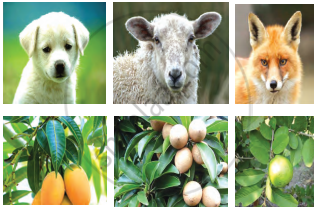Advertisements
Advertisements
Question
What do we call the degenerated or partially developed useless organs in living organisms? Enlist such organs in human body? How the same organs are useful in other animals?
Solution
- Degenerated or partially developed useless organs are called vestigial organs.
- Wisdom tooth, Appendix, Body hairs, Coccyx, are some vestigial organs in human body.
- Coccyx supports the tail in other animals. Body hairs protect from cold.
APPEARS IN
RELATED QUESTIONS
State the connecting links between Peripatus with Annelida and Arthopoda.
Differentiate between homology and analogy. Give one example of each.
Explain with an example for the given, how the following provides evidence in favor of evolution in organisms :
Homologous organs
Select two pairs from the following which exhibit divergent evolution. Give reasons for your answer.
(i) Forelimbs of cheetah and mammals
(ii) Flippers of dolphins and penguins
(iii) Wings of butterflies and birds
(iv) Forelimbs of whales and mammals
Differentiate between analogy and homology giving one example each of plant and animal respectively.
Which one of the following pairs of vegetables is an example of homologous structures?
(A) Potato and sweet potato
(B) Carrot and radish
(C) Carrot and tomato
(D) Tomato and radish
Four students P, Q, R and S differently reported the following set of organs to be analogous :
P. Forelimb of a frog and forelimb of a lizard
Q. Forelimb of a bird and forelimb of a human
R. Wings of a parrot and wings of a butterfly
S. Wings of a bird and wings of a bat
The two students who have reported correctly are :
(A) P and Q
(B) Q and R
(C) R and S
(D) P and S
Attempt giving a clear definition of the term species.
Give the importance of fossil in support of organic evolution
Explain the evolution of giraffe's neck according to Lamarck's theory of evolution.
The forelimbs of a frog, a bird and a man show the same basic design (or basic structure) of bones. What name is given to such organs?
Wing of an insect and forelimb of a bird are :
(a) analogous organs
(b) analeptic organs
(c) homologous
(d) homophobic organs
The presence of which of the following types of organs in two organisms indicates that they are derived from the same ancestor?
(a) analogous organs
(b) respiratory organs
(c) digestive organs
(d) homologous organs
Identify the following pairs as homologous and analogous organs:
(i) Sweet potato and potato
(ii) Eye of octopus and eye of mammals
(iii) Thorns of Bougainvillaea and tendrils of Cucurbits
(iv) Fore limbs of bat and whale
_______ is a connecting link between Annelida and Arthropoda.
Define phylogeny.
Very short answer question:
What is vestigeal organ?
_____________ is a vestigial organ in human beings.
Find an odd one out.
I am a connecting link between reptiles and mammals. Who am I?
Give scientific reason.
Vertebrates have slowly originated from invertebrates.
Enlist the evidences of evolution.
Observe the given images and answer the following questions.

- Which evolutionary evidence does it indicate?
- What does it prove?
- State another example of evolutionary evidence.
The degenerated and non-functional organs found in an organism are called ______.
How do you differentiate homologous organs from analogous organs?
Select the CORRECT match.
Which of these is not a vestigial organ in human beings?
Palaeontological evidence for evolution refers to the ______.
Basic principles of embryonic development were pronounced by:
Study of fossils is ______.
Evolutionary convergence is the development of:
Flippers of Penguins and Dolphins are examples of:
How do we compute the age of a living tree?
Give an example for convergent evolution and identify the features towards which they are converging.
Explain divergent evolution in detail. What is the driving force behind it?
Complete the following diagram:

Find odd one out:
As shown in figure below some organisms that share a common ancestor have features that have different functions, but similar structures.

These are known as ______. Give example.
Industrial melanism in England after 1850 is an excellent example of Natural selection. Explain how?
